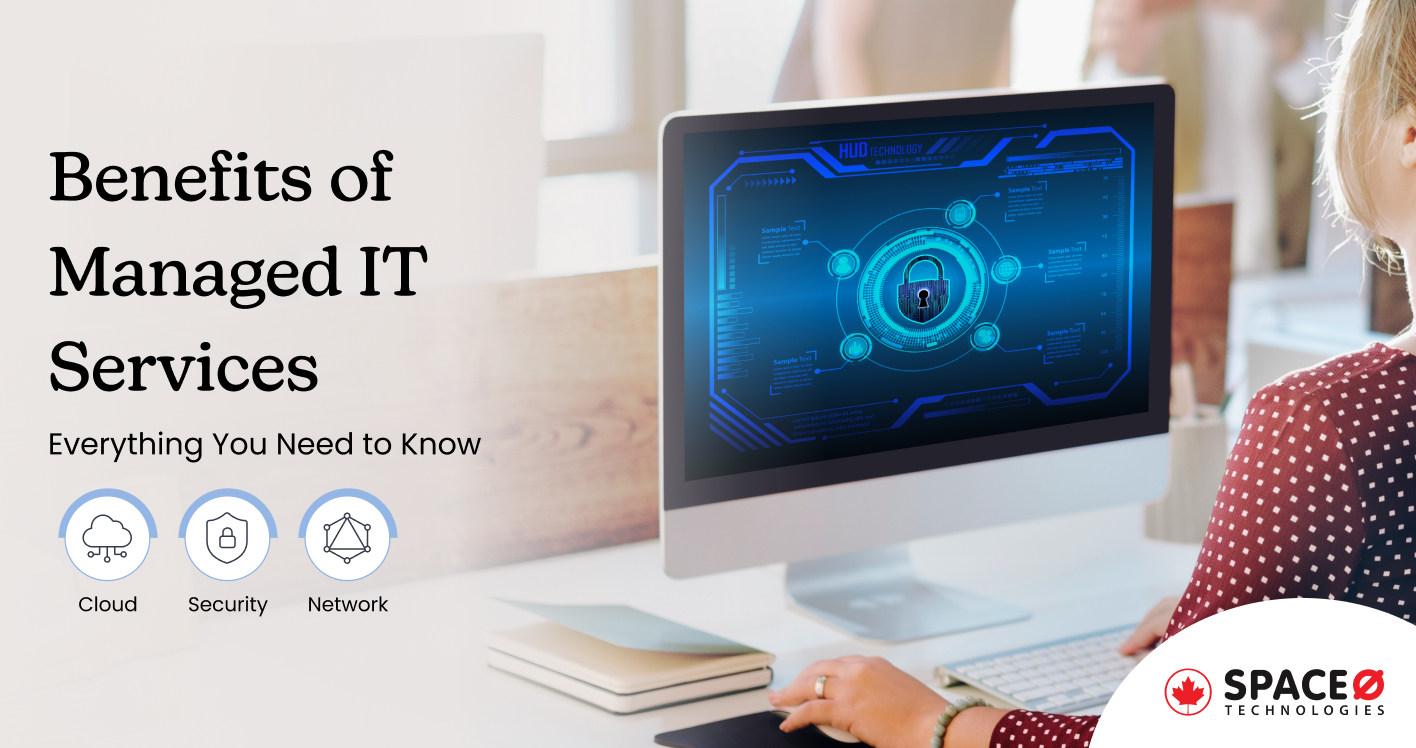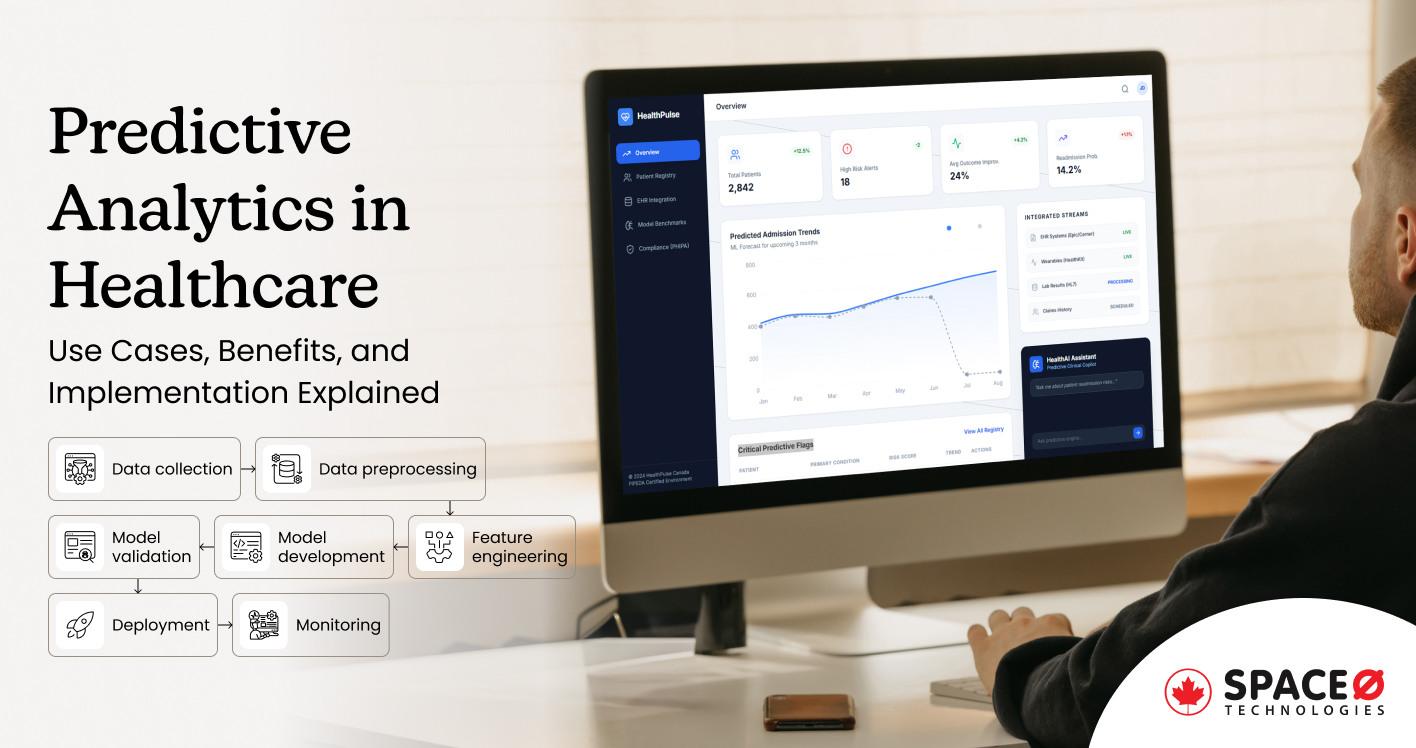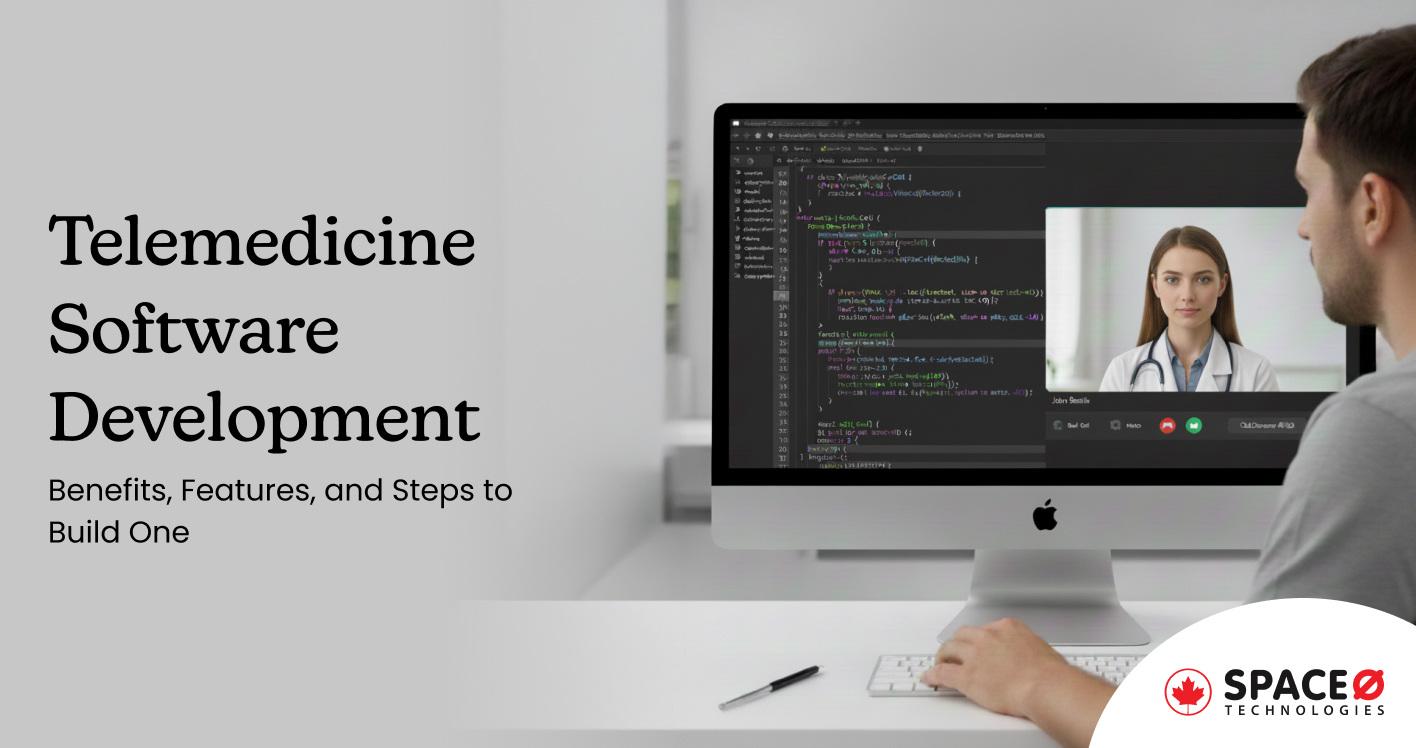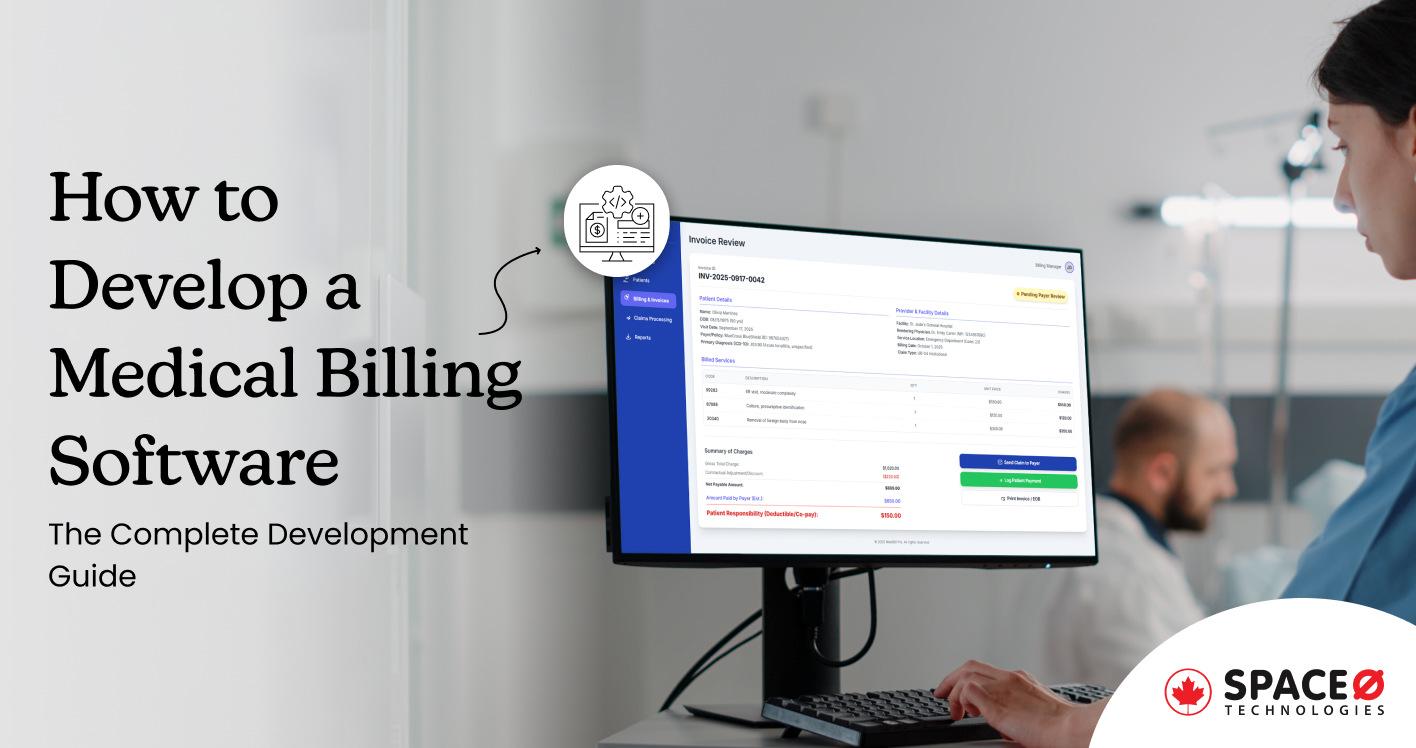
10 Key Benefits of Managed IT Services for Business Growth in 2025
Business leaders today face an unprecedented challenge: managing complex IT infrastructure while focusing on core business growth. With cyber threats surging by 75% year-over-year and IT costs consuming 2-7% of revenue for most organizations, and financial services reaching up to 11%, the traditional approach of handling everything in-house is no longer sustainable.
This comprehensive guide reveals the 10 transformative benefits of managed IT services that are driving business success across industries. From Fortune 500 companies to growing startups, organizations are discovering how managed IT partnerships unlock operational efficiency, reduce costs, and accelerate growth.
Space‑O Technologies, a leading software development company with 15+ years of industry expertise, has partnered with Fortune 500 companies and innovative startups alike to deliver cutting‑edge custom software solutions and robust managed IT services. With over 100 successful projects across diverse industries, our proven track record demonstrates a deep understanding of what businesses truly need from their managed IT partnerships, from strategic technology alignment to scalable, secure infrastructures.
What Are Managed IT Services?
Managed IT services represent a strategic partnership where external experts handle your organization’s technology infrastructure, support, and operations. Instead of maintaining an expensive in-house IT department, businesses outsource critical functions like network monitoring, cybersecurity, data backup, and technical support to specialized software development services providers.
This model transforms IT from a cost center into a business enabler. Managed service providers (MSPs) deliver proactive monitoring, 24/7 support, and strategic technology planning. They handle everything from routine maintenance to complex system upgrades and software deployment, ensuring your technology infrastructure supports business objectives rather than hindering them.
The managed services model operates on predictable monthly pricing, eliminating unexpected IT expenses. Providers typically offer service-level agreements (SLAs) guaranteeing uptime, response times, and performance metrics. This approach allows businesses to access enterprise-level technology capabilities without the associated overhead costs.
For example, suppose a midsize retail company is constantly experiencing slow network performance and frequent IT outages. Rather than hiring more internal staff, they partner with a managed IT services provider. The MSP sets up 24/7 monitoring, proactively detects issues, and resolves problems before they disrupt business operations.
10 Essential Benefits of Managed IT Services

These advantages demonstrate why businesses across industries are making the strategic shift to managed IT partnerships. Let’s explore each benefit in detail.
1. Predictable IT costs and budget control
Managed IT services eliminate unpredictable technology expenses through fixed monthly pricing models. Traditional in-house IT departments face constant budget surprises from equipment failures, emergency repairs, and unexpected upgrade requirements.
With managed services, businesses pay a predictable monthly fee covering all agreed-upon services. This includes monitoring, maintenance, support, and often hardware replacement. The predictable cost structure enables accurate financial forecasting and budget allocation. CFOs appreciate the ability to plan technology expenses months or years in advance, treating IT as an operational expense rather than an unpredictable capital expenditure.
2. Access to expert IT professionals and specialized skills
Building an in-house team with diverse IT expertise requires significant investment and ongoing training costs. Managed service providers employ teams of certified professionals specializing in various technologies, security protocols, and industry standards. These experts stay current with rapidly evolving technology trends, certifications, and best practices that would be cost-prohibitive for individual businesses to maintain internally.
Your business gains immediate access to specialists in cybersecurity, cloud computing, network administration, and emerging technologies. This depth of expertise ensures optimal system performance and strategic technology planning aligned with business objectives.
3. Enhanced cybersecurity and threat protection
Cybercrime costs businesses an average of $4.88 million per data breach, according to IBM’s 2024 research, making robust security essential for survival. Managed IT providers implement comprehensive security frameworks, including firewall management, intrusion detection, vulnerability assessments, and employee security training.
Professional MSPs maintain security operations centers (SOCs), monitoring threats 24/7. They deploy advanced threat detection tools, automated response systems, and incident recovery procedures that would cost individual businesses hundreds of thousands of dollars to implement independently.
Regular security audits, compliance monitoring, and proactive threat hunting ensure your organization stays ahead of evolving cyber threats. This level of protection significantly reduces the risk of costly data breaches, regulatory fines, and reputation damage.
4. Scalable IT solutions for business growth
Growing businesses face constant technology scaling challenges. Adding new employees requires additional licenses, hardware, and system capacity. Managed IT services provide seamless scalability without the typical growing pains associated with technology expansion.
Providers design infrastructure with growth in mind, implementing solutions that easily accommodate additional users, locations, and functionality. Cloud-based systems enable rapid scaling up or down based on business needs, ensuring technology never becomes a growth bottleneck.
This scalability extends to specialized software, security tools, and emerging technologies. As your business evolves, managed providers adapt your technology stack accordingly, ensuring optimal performance and cost-effectiveness at every stage.
5. Reduced downtime with proactive monitoring
System downtime costs businesses $5,000+ per minute for 90% of enterprises, with 41% facing costs exceeding $16,000 per minute according to ITIC’s 2024 research, making prevention critical for profitability. Managed IT providers implement comprehensive monitoring systems that track network performance, server health, and application functionality 24/7.
Proactive monitoring identifies potential issues before they cause system failures. Automated alerts enable immediate response to performance degradation, security threats, or hardware problems. This preventive approach dramatically reduces unexpected outages and emergency repairs.
When issues do occur, managed providers have established procedures, backup systems, and replacement hardware ready for immediate deployment. The result is significantly improved uptime and business continuity compared to reactive in-house approaches.
6. Focus on core business objectives
Managing IT infrastructure consumes valuable leadership time and resources that could be directed toward revenue-generating activities. Business leaders who spend hours troubleshooting technology issues or managing IT vendors lose focus on strategic priorities.
Outsourcing IT management frees internal teams to concentrate on core competencies, customer service, and business development. This improved focus typically results in increased productivity, better customer satisfaction, and accelerated business growth.
Management teams can redirect their attention to strategic planning, market expansion, and competitive positioning instead of focusing on technical challenges. This strategic alignment often delivers ROI that far exceeds managed services costs.
7. 24/7 technical support and service
Technology issues don’t follow business hours, but most in-house IT teams do. Managed service providers offer round-the-clock support, ensuring immediate assistance regardless of when problems occur.
Professional help desk services provide multiple support channels, including phone, email, remote assistance, and on-site visits when necessary. Tiered support structures ensure appropriate expertise handles each issue, from basic password resets to complex system recovery.
This continuous availability gives business leaders peace of mind knowing technology support is always accessible. Remote work environments particularly benefit from 24/7 support, enabling productivity regardless of location or time zone.
8. Access to cutting-edge technology and tools
Staying current with technology requires constant research, evaluation, and investment in new tools and platforms. Enterprise-grade software licenses can cost thousands of dollars monthly, making advanced technology financially prohibitive for many businesses. This is where partnering with an enterprise application development provider becomes valuable.
Managed service providers leverage economies of scale to offer access to premium technology solutions at a fraction of individual licensing costs. This includes advanced monitoring tools, security platforms, backup solutions, and productivity software. Providers also handle technology evaluation, implementation, and training using the latest software development tools, ensuring your team gains maximum value from new tools. This approach enables small and medium businesses to compete with larger organizations using similar technology capabilities.
9. Cloud computing capabilities and solutions
88% of organizations report increased agility from cloud adoption, with 56% achieving faster time-to-market according to Deloitte research, while reducing infrastructure costs significantly. However, cloud migration requires specialized expertise in security, compliance, and architecture design, along with knowledge of the latest software development trends
Managed IT providers handle complete cloud strategy development, migration planning, and ongoing optimization. They ensure proper security configurations, backup procedures, and disaster recovery protocols while maximizing cost efficiency.
Multi-cloud environments, hybrid architectures, and specialized cloud applications become accessible with proper guidance and management. This enables businesses to leverage cloud benefits while avoiding common pitfalls and security vulnerabilities.
10. Improved employee productivity and efficiency
Technical problems consistently rank among the top productivity killers in modern workplaces. According to Microsoft’s 2024 Work Trend Index, employees face an average of 275 daily interruptions requiring 23 minutes each to regain focus. IT-related issues contribute significantly to this productivity loss, impacting overall organizational efficiency.
Managed IT services minimize these disruptions through proactive maintenance, rapid issue resolution, and optimized system performance. Well-maintained technology enables employees to focus on their primary responsibilities rather than troubleshooting problems.
Additionally, managed providers implement productivity-enhancing tools, automation solutions, and streamlined workflows that improve operational efficiency. The combination of reliable technology and optimized processes typically results in measurable productivity gains across the organization.
How C-Suite Executives Use Managed IT Services
C-suite executives increasingly recognize the strategic importance of managed IT services in achieving critical business objectives. Rather than viewing technology as a necessary expense, forward-thinking leaders understand how managed services benefits directly benefit executive priorities across every organizational level.
CEO Focus: Competitive Advantage and Business Growth
For CEOs focused on competitive advantage and growth, managed IT services enable strategic agility and market responsiveness. The benefits of managed services include faster time-to-market for new initiatives, enhanced customer experiences through reliable technology, and the ability to respond quickly to market changes. This strategic alignment transforms IT from a support function into a business enabler.
CFO Priorities: Financial Predictability and Cost Optimization
CFOs appreciate the financial predictability and cost optimization that managed services provide. Managed service provider benefits include transparent pricing models that eliminate budget surprises, reduced capital expenditure requirements, and improved ROI on technology investments. The importance of managed IT services becomes clear when examining total cost of ownership, which typically decreases by 25-40% while delivering superior capabilities.
2. CTO and CIO Goals: Innovation and Digital Transformation
CTOs and CIOs find that managed services accelerate innovation and digital transformation initiatives. Access to cutting-edge technologies, cloud expertise, and emerging solutions enables faster implementation of strategic technology roadmaps. Why choose managed IT services becomes obvious when internal teams can focus on innovation rather than maintenance activities.
Board-Level Risk Management and Compliance
Risk management represents another critical C-suite alignment area. Board-level discussions increasingly focus on cybersecurity risks, compliance requirements, and business continuity planning. Managed IT services benefits include enterprise-grade security frameworks, disaster recovery capabilities, and regulatory compliance expertise that protect organizational reputation and shareholder value.
Strategic Planning and Long-Term Growth Support
Strategic planning benefits from managed services partnerships through technology roadmap development, digital transformation guidance, and scalable infrastructure that supports long-term growth objectives. This alignment ensures technology decisions support the broader business strategy rather than creating operational constraints.
What to Look for in a Managed Service Provider
Selecting the right managed service provider determines the success of your IT partnership. Here are 6 key factors that will help you determine the best managed IT service provider for your business.
1. Industry experience and specialization
Your managed IT service partner’s specialization should align with your business sector and specific technology requirements. Providers serving similar companies understand potential obstacles like unique challenges and regulatory requirements.
2. 24/7 support capabilities
These are non-negotiable in today’s business environment. Verify response times, escalation procedures, and availability across different support channels. Ask for specific SLA commitments regarding uptime guarantees and resolution timeframes.
3. Security certifications and compliance expertise
Managed IT service partners with security certifications and compliance expertise can protect your organization from costly breaches and regulatory violations. Look for providers holding relevant certifications like SOC 2, ISO 27001, and industry-specific compliance credentials. Verify their approach to data protection, incident response, and vulnerability management.
4. Scalability and growth support
Ensure the scalability of your chosen managed IT service to guarantee your technology partnership adapts with business evolution. Evaluate their cloud expertise, integration capabilities, and experience supporting business expansion. The provider should demonstrate the ability to handle increasing complexity and geographic distribution.
5. Technology partnerships and certifications
Access to cutting-edge tools and vendor support should be a crucial factor in gaining an advantage over others. Leading providers maintain partnerships with major technology companies, ensuring access to the latest innovations and technical support when needed for comprehensive software development projects.
6. Proven track record and client testimonials
A track record you can verify and client testimonials provide insight into provider reliability and customer satisfaction. Request references from similar businesses and verify their experience handling comparable challenges. Case studies and testimonials reveal problem-solving approaches and results delivery. Space-O Technologies excels across all these criteria with 7+ years serving Fortune 500 companies, comprehensive security frameworks, 24/7 support capabilities, and proven scalability supporting business growth from startups to enterprise organizations.
Space-O offers Managed IT Services to the following areas.
- Managed IT Services in Calgary
- Managed IT Services in Toronto
- Managed IT Services in Montreal
- Managed IT Services in Edmonton
Partner With Space-O Technologies for Your Managed IT Services Requirements
The benefits of MSPs extend far beyond simple cost savings. Organizations partnering with professionally managed service providers gain access to enterprise-level technology capabilities, expert personnel, and strategic guidance that would be impossible to develop internally. From predictable budgeting to enhanced security, improved productivity to scalable growth support, managed IT services address the critical technology challenges facing modern businesses. The combination of proactive monitoring, 24/7 support, and cutting-edge tools creates a technology foundation that enables rather than hinders business success.
Ready to Experience These IT Benefits?
Transform your technology infrastructure with Space-O Technologies’ comprehensive managed IT solutions. Our proven expertise, 24/7 support, and scalable services help businesses achieve their technology goals while focusing on core growth objectives.
Frequently Asked Questions about the Benefits of Managed IT Services
What are the main benefits of managed IT services?
The primary benefits include predictable IT costs, access to expert professionals, enhanced cybersecurity, scalable solutions, reduced downtime, improved productivity, 24/7 support, cutting-edge technology access, cloud capabilities, and the ability to focus on core business objectives.
How do managed IT services improve business efficiency?
Managed IT services improve efficiency through proactive monitoring that prevents downtime, optimized system performance, automated processes, rapid issue resolution, and access to productivity-enhancing tools that streamline operations.
Why do businesses need managed IT services?
Businesses need managed IT services to address the complexity of modern technology, cybersecurity threats, skills shortages, cost control challenges, and the need for strategic technology planning that supports business growth.
What is the ROI of managed IT services?
Most businesses see ROI within 6-12 months through reduced IT costs (25-40% savings), improved productivity, decreased downtime, and the ability to redirect internal resources to revenue-generating activities.
How do managed services reduce IT costs?
Managed services reduce costs by eliminating unpredictable expenses, providing economies of scale for software licensing, reducing the need for full-time IT staff, preventing costly downtime, and optimizing technology investments for maximum efficiency.
Editor's Choice

Predictive Analytics in Healthcare: Use Cases, Benefits, and Implementation Explained

Telemedicine Software Development: A Complete Guide to Building Remote Healthcare Platforms

Medical Billing Software Development: The Complete Guide for Healthcare Providers
All our projects are secured by NDA
100% Secure. Zero Spam
*All your data will remain strictly confidential.
Trusted by


Bashar Anabtawi
Canada
“I was mostly happy with the high level of experience and professionalism of the various teams that worked on my project. Not only they clearly understood my exact technical requirements but even suggested better ways in doing them. The Communication tools that were used were excellent and easy. And finally and most importantly, the interaction, follow up and support from the top management was great. Space-O not delivered a high quality product but exceeded my expectations! I would definitely hire them again for future jobs!”

Canada Office
2 County Court Blvd., Suite 400,
Brampton, Ontario L6W 3W8
Phone: +1 (437) 488-7337
Email: sales@spaceo.ca

